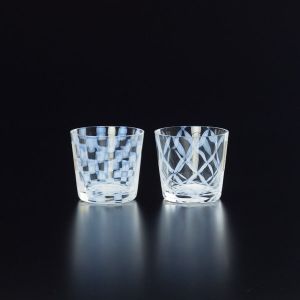2019年09月26日
[NOTICE] Extra holidays due to system maintenance (Oct. 1st ~ Oct. 7th)
...
2015年8月18日
Now, we can see many TV programs that introduce traditional crafts or Japanese masterpieces.
In fact, many traditional crafts in our store are introduced in some TV programs.
Our staff often tells me "I saw this product introduced at a TV program last night."
I try to find a back number whenever they tell me.
The following programs often introduce traditional crafts and Japanese masterpieces.
These programs introduce the histories of ateliers or studios we did not know.
So, I enjoy learning from the programs.
Today, we would like to introduce "Taisho Roman glass series" from Hirota Glass.
A TV program "Glassware" from NHK "Admiration manual Bi-no-Tsubo" introduced this unique glass.
Japanese people started to produce glassware energetically after 19th century.
It is said that all the craftsmen in that era developed their technique simultaneousliy with the inflow of modern skill of glassware from the West.
At that time, craftsmen produce glassware with Japanese traditional patterns such as Seigaiha or Tokusa.
With the Western skill, Japanese craftsmen produced "Japanese modern" glassware.
Japanese people are good at arranging new technology from the world into "Japanese" design.
We can feel the rich ideas and senses of our ancestors from here.
"Taisho Roman Glass" from Hirota Glass is the revival series of that glasses.
The hazy patterns are expressed by a special skill “Nyuuhaku-glass-aburidashi.”
“Nyuuhaku-glass-aburidashi” is the specific name of the blowing skill.
Skilled craftsmen blow glass which includes special material named kokkai (bone ash) to uneven patterned mold.
When the hot glass touches to the mold, the sudden change of temperature develops the color of opal. Then, certain pattern will appear to the glass.
To develop the opal pattern to the glass, set melt glass in an uneven mold, and blow it.
Then, the glass becomes uneven, and temperature difference developed.
Reheating the glass, and the hollowed place raises its temperature suddenly.
That rapid temperature change develops the opal pattern.
This “Nyuuhaku-glass-aburidashi” skill was introduced from the West.
In the European style, the glassware by this skill has uneven surface.
On the contrary, the "Taisho Roman glass" of Hirota Glass has smooth surface.
This is due to an additional procedure.
The craftsmen of Hirota Glass blow the glass again in reheated mold.
So, we can see hazy pattern on the smooth surface glass.
At the TV program, Mr. Susumu Kogure, the curator of Takehisa Yumeji Ikaho Memorial introduced the "Taisho Roman Glass" as follows.
"This is Japanese color, the sense of Japan that develops calm color in Taisho era. The way of express not clearly. It arouses our imagination."
"Every day, every time, from morning to night, we receive various forms from the nature. Japanese people develops design from those. We take in the nature into the life, and enjoy the life. Then, Japanese take the nature into glassware, too. "
The glassware produced at that era include the fresh sense and rich idea of Japanese people in that era.

Taisho Roma glass series
Beautiful glass of Taisho Roman glass series
Edo kiriko glass Karai like a jewel
Taisho Roman glass series, soy sauce dispenser by Hirota glass

2019年09月26日
[NOTICE] Extra holidays due to system maintenance (Oct. 1st ~ Oct. 7th)
...
2019年08月07日
Operating hours during the Bon holidays.
We do appreciate your continued patronage to Japan...

2019年07月18日
We renewed Japan Design Store website!
We renewed Japan Design Store website. ...

2019年07月09日
Stay cool in summer! Stylish wind chimes of Nousaku
☆It it summer☆ The season of wind ch...